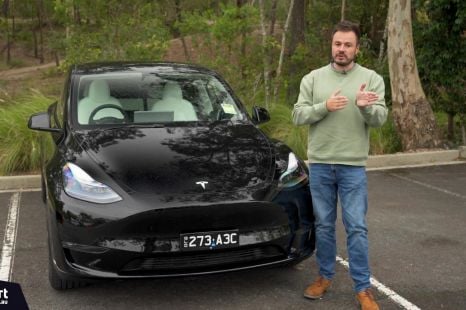

Paul Maric
This Tesla self-drove me 50km to Bunnings on its own (almost)
6 Days Ago
The Kia EV3 lands in Australia looking to steal prospective budget EV buyers away from Chinese brands – and there's a lot of substance here.
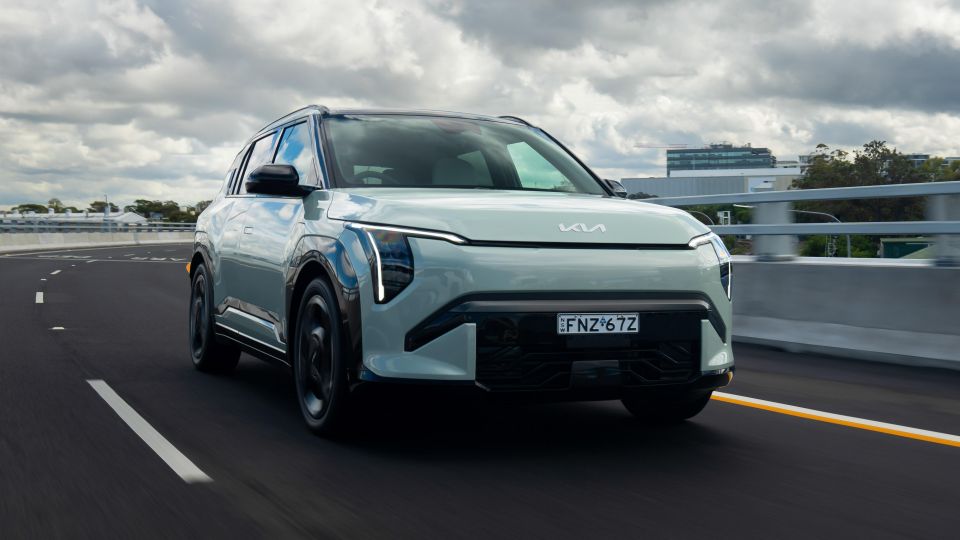


Quickly see how this car stacks up against its competition. Select any benchmark to see more details.
Where expert car reviews meet expert car buying – CarExpert gives you trusted advice, personalised service and real savings on your next new car.
Kia’s cheapest electric vehicle (EV) yet is now arriving in Australia – welcome the 2025 Kia EV3.

The Korean brand’s EV push started off in the more premium SUV segments, with the large EV6 and upper large EV9 spearheading the charge and also serving as the company’s new flagships.
Since then, we’ve seen the more affordable mid-size EV5 lob with sharp drive-away pricing, and now the small EV3 arrives priced from under $50,000 on the road – not much more than a similarly sized, high-spec, petrol-powered Seltos.
Designed to look like a shrunken EV9, the Kia EV3 rides on a variation of the Korean brand’s E-GMP dedicated electric vehicle architecture, but like the EV5 moves to a front-wheel drive bias as opposed to the rear-biased setups of the EV6 and EV9.
It offers class-leading range, with over 600km of WLTP-certified range available from the Long Range, and claims to bring interior packaging similar to a BYD Atto 3 within an external form closer to that of the Volvo EX30.

After driving it at the international media launch in Seoul last year, we joined the Australian media drive on the Gold Coast to see how it fares on local roads, for which Kia’s local team has once again applied its own ride and handling tune.
How does this affordable new EV compare with the plethora of rivals available here from Chinese brands? Read on to find out.
Kia EV3 pricing starts from $48,990 drive-away (except in WA), with the GT-Line topping out at $68,490 drive-away.
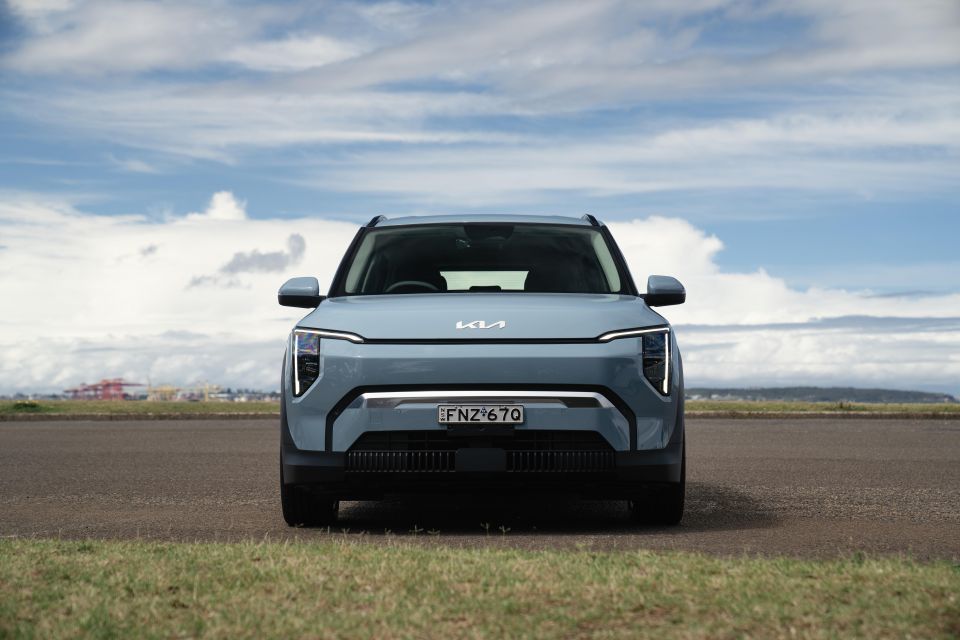
| Model | Price before on-roads | Drive-away price (excl. WA) | Drive-away price (WA) |
|---|---|---|---|
| 2025 Kia EV3 Air Standard Range | $47,600 | $48,990 | $49,990 |
| 2025 Kia EV3 Air Long Range | $53,315 | $56,490 | $57,490 |
| 2025 Kia EV3 Earth Long Range | $58,600 | $62,690 | $63,690 |
| 2025 Kia EV3 GT-Line Long Range | $63,950 | $68,490 | $70,490 |
Kia notes that in the ACT, drive-away pricing is available only for the Air Standard Range.
To see how the Kia EV3 lines up against the competition, check out our comparison tool
At the international launch last September I really only sampled high-spec EV3s, so driving the lower grades on home soil was quite interesting given they’re already very well specified, if not quite as well dressed up as the international-spec models I tested in Seoul.
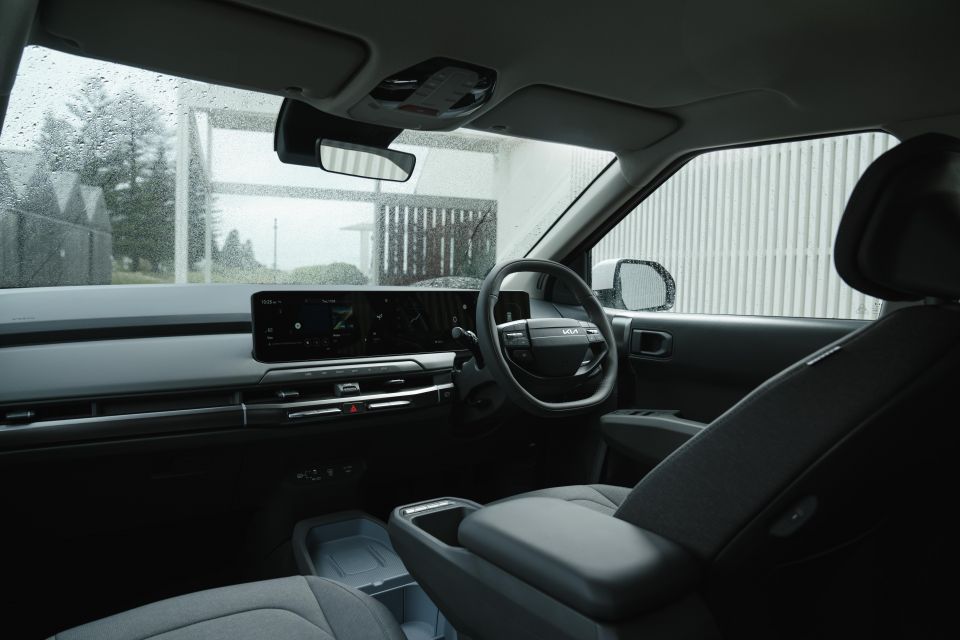
All models come with Kia’s high-grade dual-12.3-inch displays as standard, in addition to the digital climate control pod sandwiched in between. It’s all lifted straight out of the larger EV9, which is more than twice the price. A head-up display is reserved for the GT-Line only, but it’s a good one.
Like we’ve said in previous reviews of Kias with the connected car navigation cockpit (ccNC), the displays are crisp and offer snappy response to touch inputs. There are smartphone-like pinch to zoom gestures for the navigation and it’s also fully featured with wireless Apple CarPlay and Android Auto, DAB+ digital radio and satellite navigation with live traffic.
Kia Connect is also included with purchase for seven years. In addition to connected navigation routing and traffic information, you get stuff like remote vehicle services and access to the Kia Connect app. There’s even an intelligent on-board assistant that understands natural speech, which can help with infotainment and vehicle functions.
All models come with a premium leather-wrapped steering wheel, which in its retro-inspired two-spoke design and offset ‘KIA’ logo is something a little different at this end of the market. Even better, the multifunction switchgear is chunky, logical and easy to use.
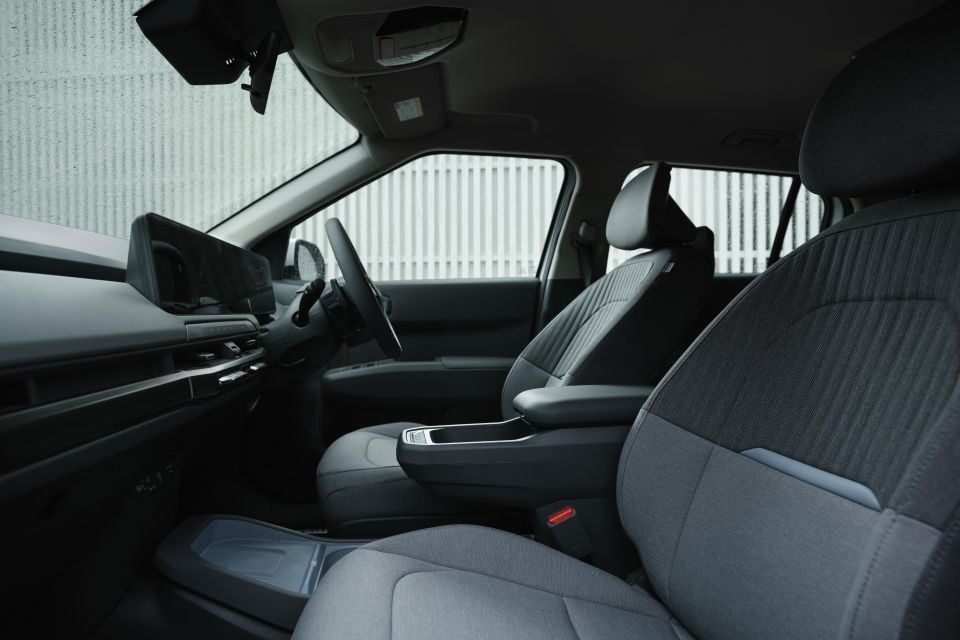
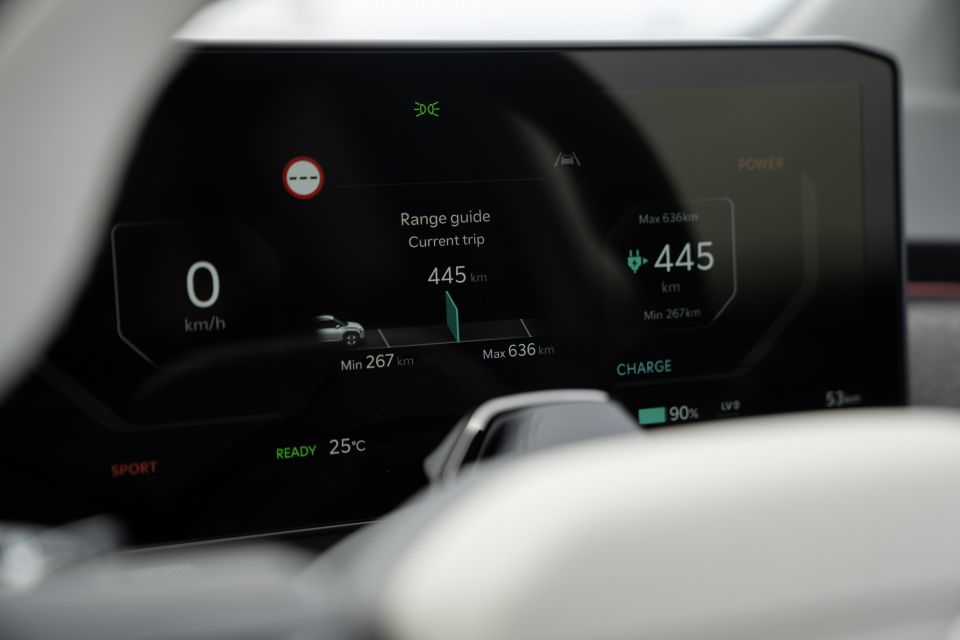
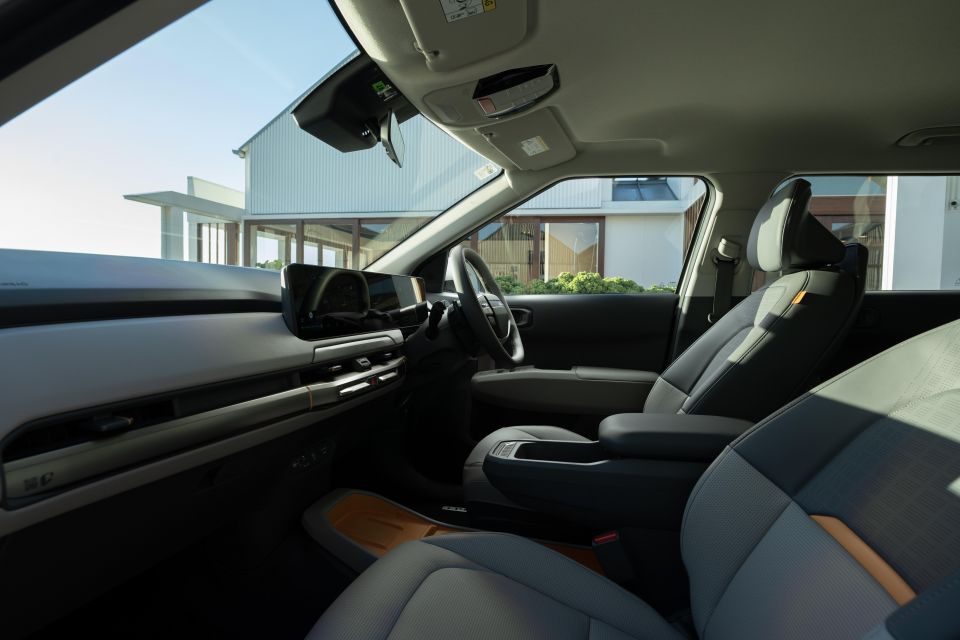
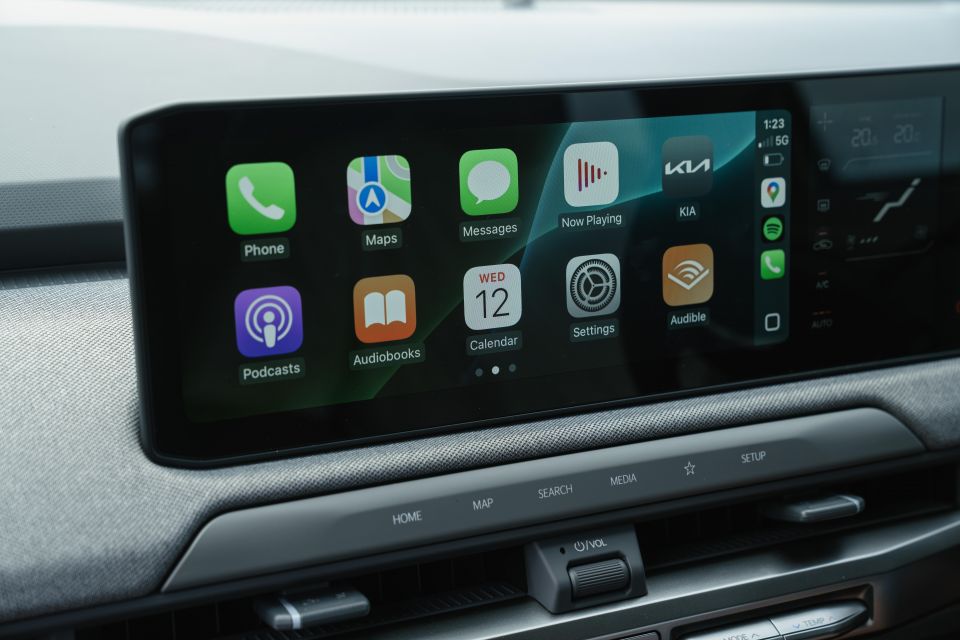
Whether you choose the Air with its cloth trim or the Earth and GT-Line grades with their smooth leatherette upholsteries, the front seats in the EV3 are comfortable and supportive, helped by an airy cabin feel courtesy of the high roofline and open plan cabin layout.
The Earth gets a 10-way power driver’s seat and a heated steering wheel, while the GT-Line adds power adjustment for the front passenger. There’s heating and ventilation from the Earth grade, which is pretty swish for the mid-grade car.
Kia has taken a very minimalist approach to physical buttons and switches with its latest cars, but the key functions still have hard buttons and shortcuts in this fiddly age of touch-capacitive and touchscreen-based ergonomics.
Haptic buttons on the dashboard act as infotainment shortcuts, and there are physical toggles for climate control temperature and fan speed to go with the digital controls sandwiched between the 12.3-inch displays.
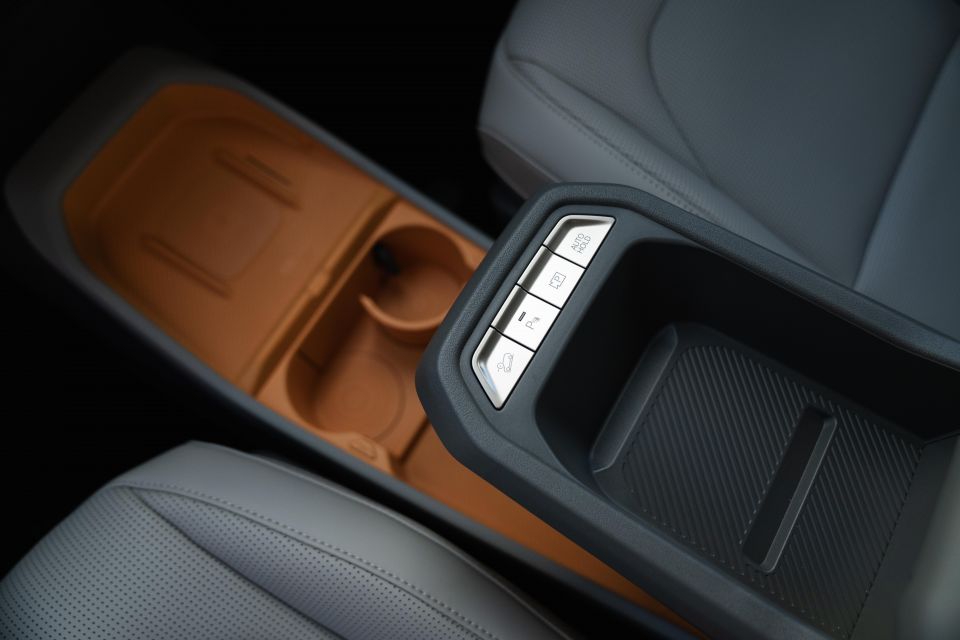
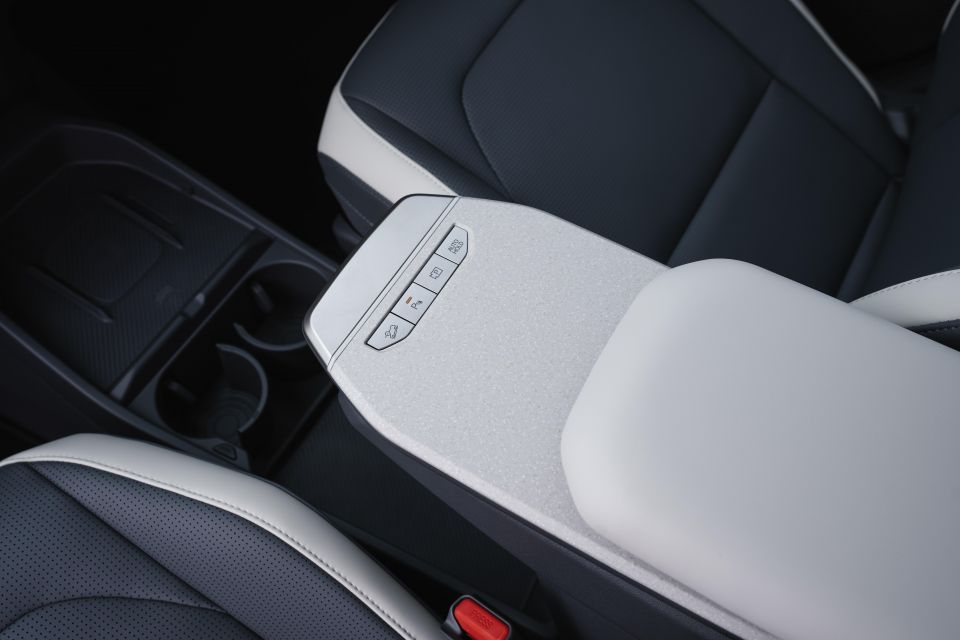
Despite being quite compact, the EV3 offers quite a bit of storage in its open plan cockpit. The floating centre console comes in two variations – Air and Earth models get an open storage compartment with an armrest that doubles as a lid, while the GT-Line gets the quirky sliding table console big enough to support a large laptop.
Underneath there’s a modular lower console with a compartment big enough for a small bag, adjustable cupholders, and ahead of all that is a slot for your smartphone to sit with a Qi-standard wireless phone charger – standard across the range too, unlike most of Kia’s other models.
There are additional hard buttons for functions like the reversing camera and parking sensors, as well as hill descent control and Auto Hold. Speaking of the camera, there’s sadly no surround camera on any EV3 model in Australia – more on that in a little bit.
Also worth noting is the fact the Earth comes with two different colours for the interior, one with a blue accent for the seats and console tray up front, the other with distinctive orange inserts instead.

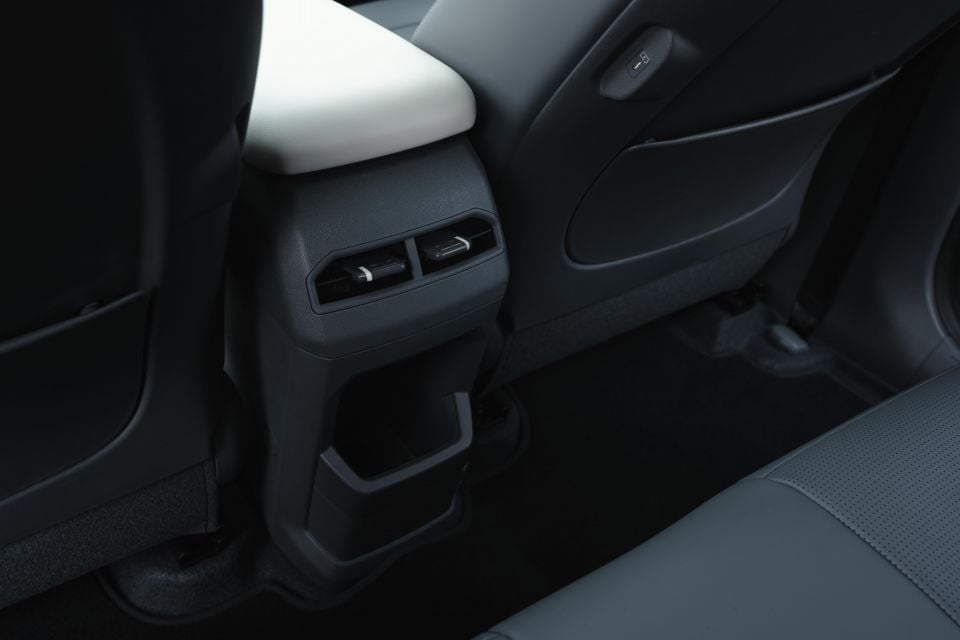
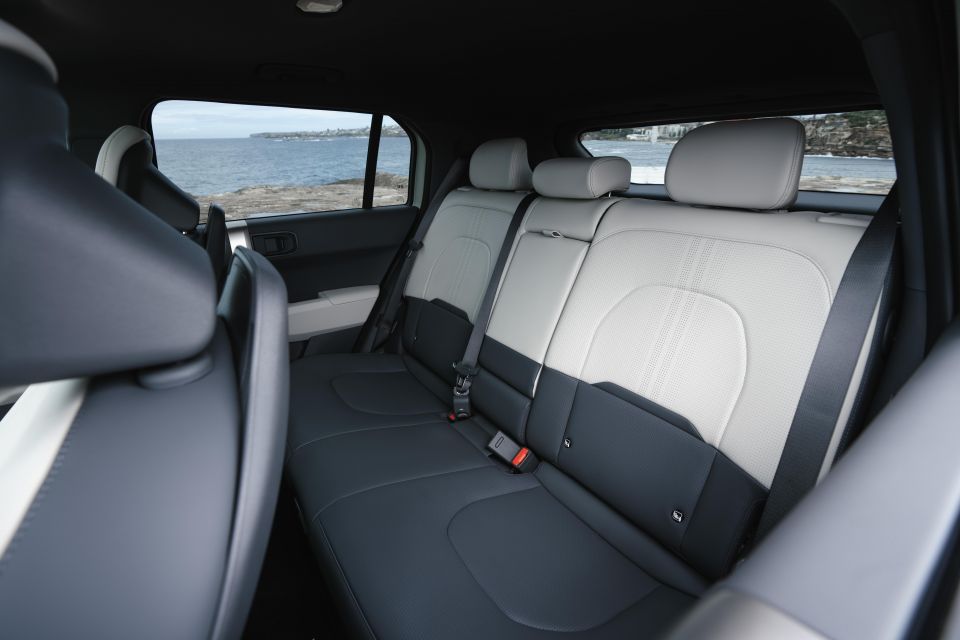
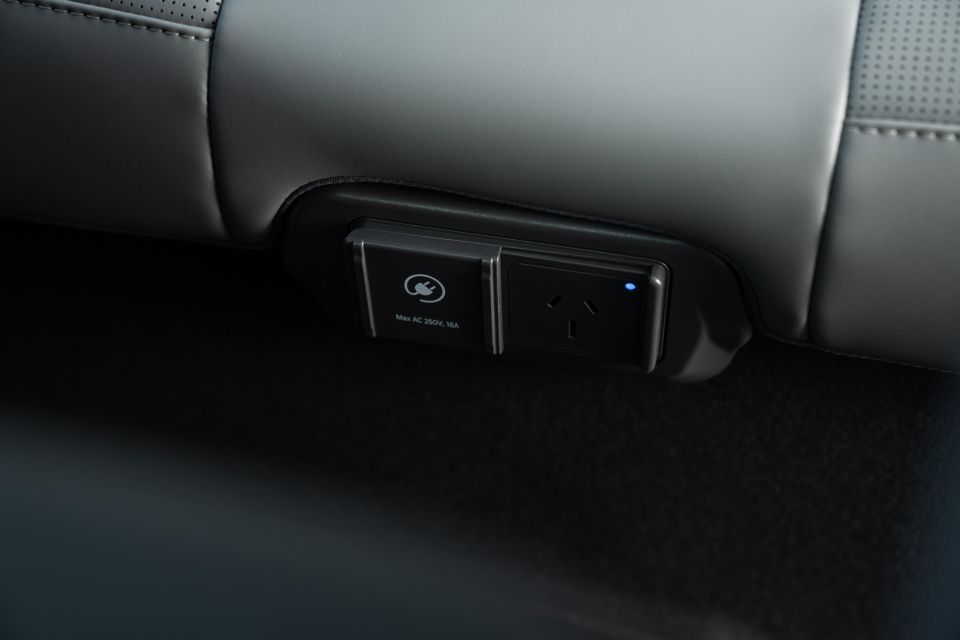
The EV3 may not look all that big, being just 4300mm in length, but its long 2680mm wheelbase means there’s good space for adults in the rear. I’m 6’1″ and didn’t’ struggle to fit behind my own preferred driving position with good headroom and legroom for this size of vehicle.
While the rear bench and floor is quite flat, I imagine fitting three across would be a squeeze too tight for regular use. Two adults or up to three kids should be fine though, and there are your requisite ISOFIX and top-tether child seat anchor points.
All Kia EV3 variants in Australia score an interior vehicle-to-load (V2L) power outlet under the centre seat, meaning you can plug in chargers or electrical appliances via a conventional wall socket and use the car to power it. For example, a laptop when you’re working remotely for extended periods.
Other amenities include directional rear air vents, a fold-down rear centre armrest with cupholders, as well as a number of storage options to stow your odds and ends.
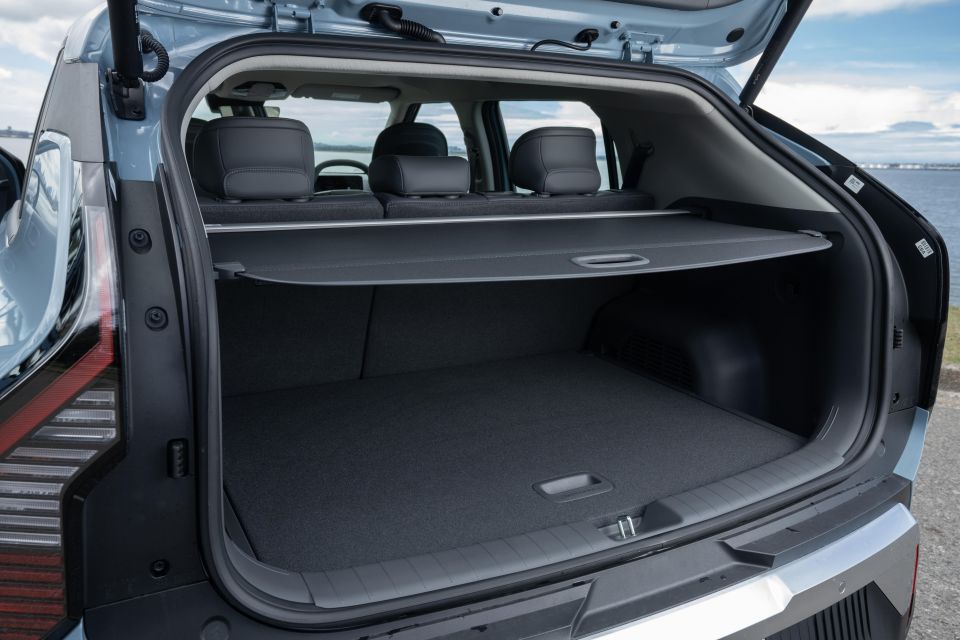
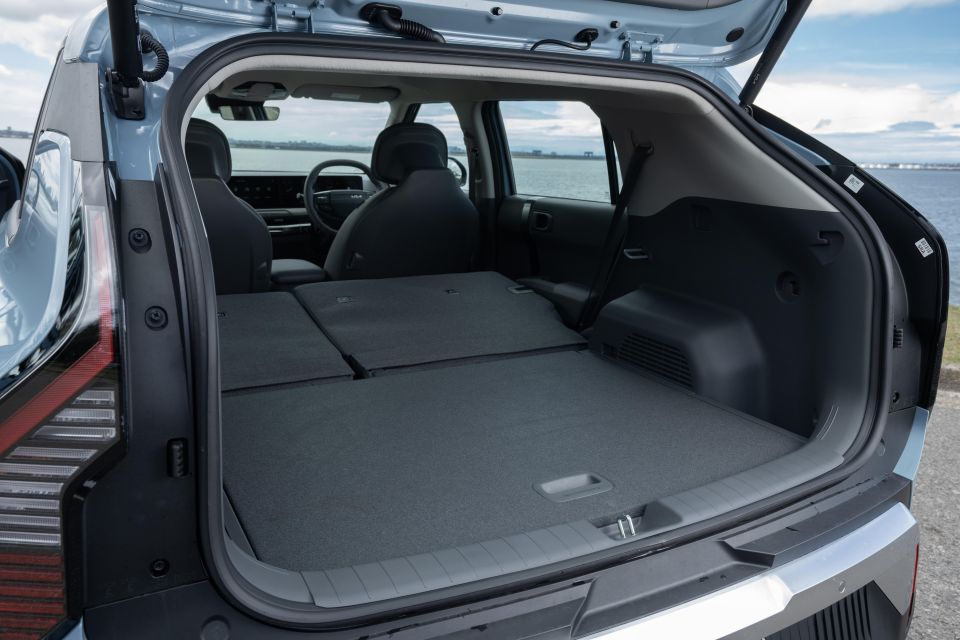
Further back you have 460 litres of boot space with the rear seats up, including a deep underfloor storage area under the adjustable boot floor, so you have a space to hide things or stow your standard charging cables.
The rear seats fold almost flat with the floor in its higher position, though Kia doesn’t quote a volume figure in this configuration. You also get a ‘frunk’ with 25 litres of storage, and a tyre mobility kit – no spare wheel here.
| Dimensions | Kia EV3 |
|---|---|
| Length | 4300mm 4310mm (GT-Line) |
| Width | 1850mm |
| Height | 1560mm 1570mm (GT-Line) |
| Wheelbase | 2680mm |
| Cargo capacity (VDA) | 460L (rear seats up) 25L (under-bonnet storage) |
To see how the Kia EV3 lines up against the competition, check out our comparison tool
Just a 25-litre storage area. Under the skin, the EV3 runs a version of the Hyundai Motor Group’s E-GMP dedicated vehicle architecture, though unlike the larger EV6 and EV9 this is a front-wheel drive version of the platform.
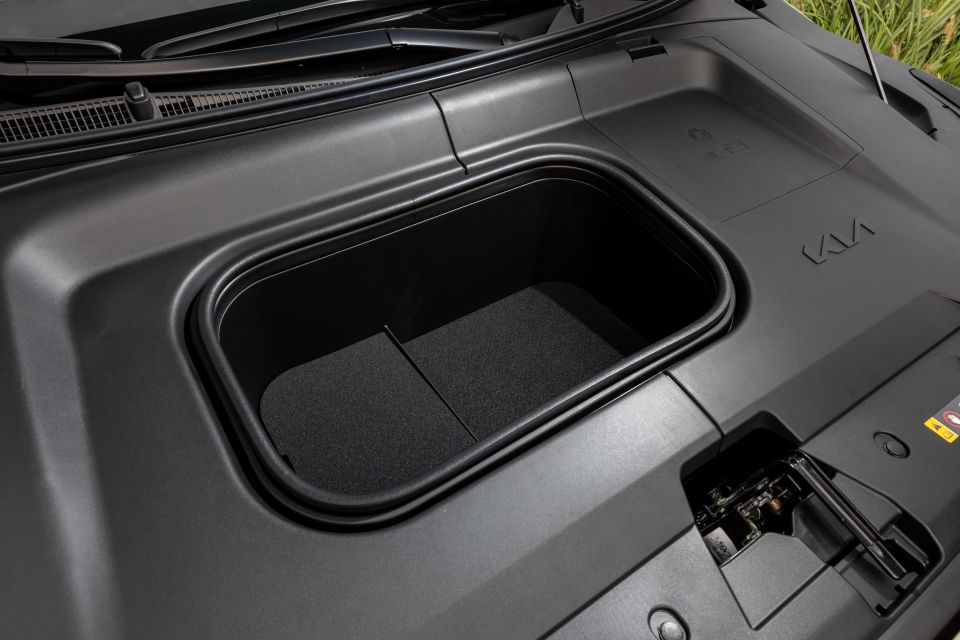
| Specifications | Kia EV3 Standard Range | Kia EV3 Long Range |
|---|---|---|
| Drivetrain | Single-motor, front-mounted | Single-motor, front-mounted |
| Battery | 58.3kWh lithium-ion | 81.4kWh lithium-ion |
| Power | 150kW | 150kW |
| Torque | 283Nm | 283Nm |
| Drive type | Front-wheel drive | Front-wheel drive |
| Kerb weight | 1845kg | 1930kg |
| 0-100km/h (claimed) | 7.5 seconds | 7.7 seconds (Air LR) 7.9 seconds (Earth, GT-Line) |
| Energy consumption (WLTP, claimed) | 14.9kWh/100km | 14.9kWh/100km (Air LR) 16.2kWh/100km (Earth, GT-Line) |
| Claimed range (WLTP) | 436km | 604km (Air LR) 563km (Earth, GT-Line) |
| Max DC charge rate | 100kW | 127kW |
Only the Air Long Range with its smaller wheel and tyre package is able to achieve over 600km of driving range according to official testing, but 563km from the Earth and GT-Line is nothing to sneeze at.
Kia has confirmed there will be dual-motor AWD versions of the EV3 eventually for those wanting all-paw traction, and a high-performance GT version is also in the works.
Also worth noting is the fact Kia quotes a 100-127kW DC fast-charging capacity depending on model, even if it uses 350kW ultra-fast charging speeds to quote charging times. For reference, it’ll take 29 minutes in the Standard Range and 31 minutes in the Long Range to charge from 10 to 80 per cent using a 350kW DC charger.
We also saw better-than-claimed indicated efficiency on our launch drive. With a mix of urban and highway driving conditions we saw as low as the 13s in some parts of the drive program, levelling out at 15-16kWh/100km with more highway and spirited B-road conditions thrown in.
If you’re asking, there’s no heat pump available for Australia, even as an option. Kia’s local team argues that there are so few places in Australia where it would really be required, so it opted against bringing the tech here.
To see how the Kia EV3 lines up against the competition, check out our comparison tool
The Australian-spec EV3 is a little different to the car I drove in South Korea six months ago.
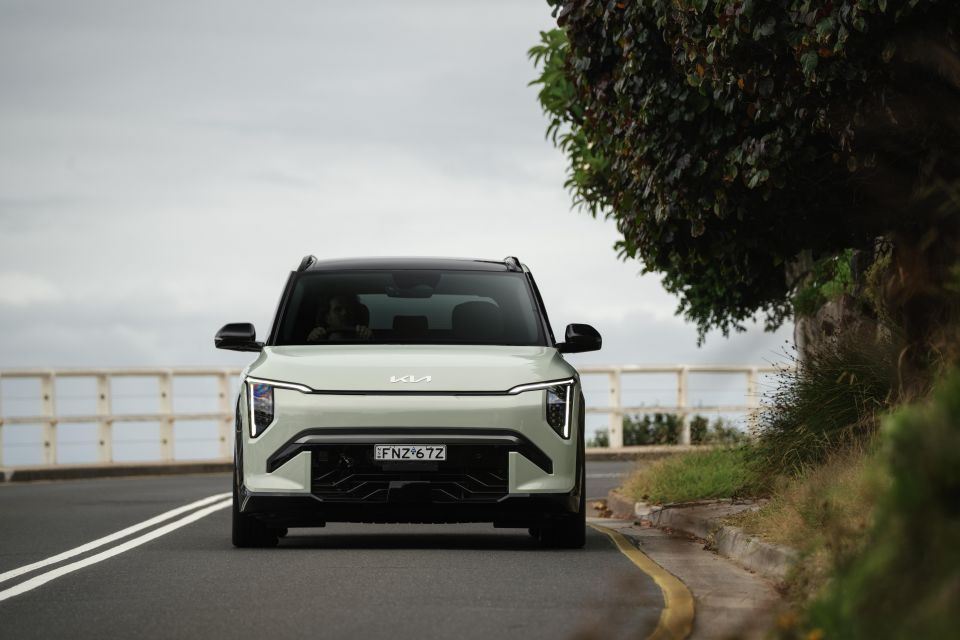
Kia Australia has subjected the little EV to its extensive local chassis tuning program, which saw the EV3 pick up unique springs, anti-roll bars and shocks compared to the global specification.
Company representatives say they aimed for a neutral handling balance with a “rounded and compliant ride overall, especially on high-speed country roads”. This is very similar to what was said of the Kia K4’s local tune.
And, I reckon they’ve nailed it once again. After driving the Air Standard Range as well as the Earth and GT-Line Long Range variants, it’s clear Kia’s local ride and handling team have bestowed it with a newfound directness and maturity on the road that was lacking in the global launch vehicles.
Like the K4, there’s a nice fluidity and response to the steering on initial turn-in, bolstered by strong grip levels even in the adverse weather we encountered west of the Gold Coast during our launch drive post Cyclone Alfred.
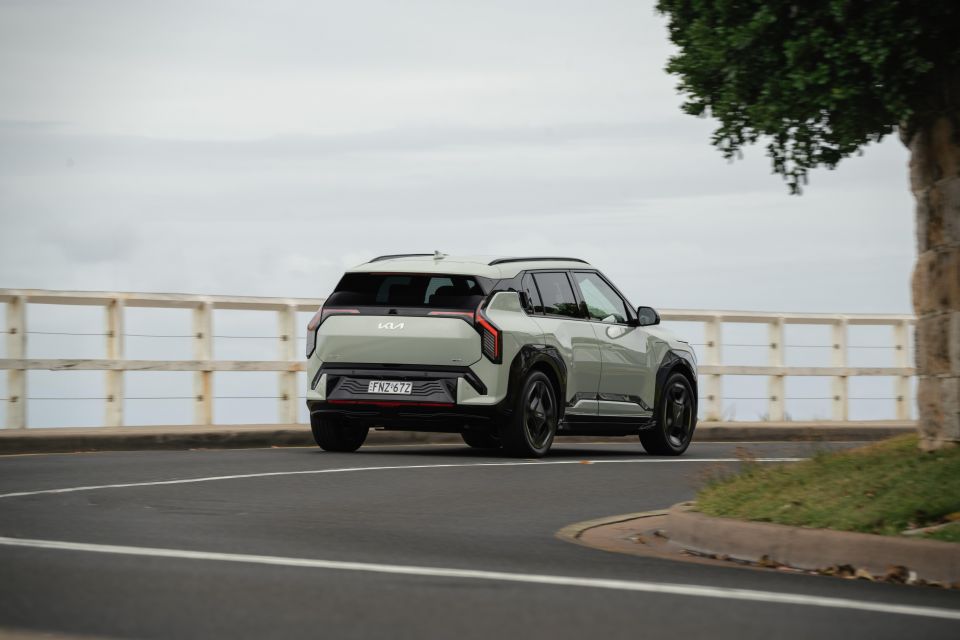
It didn’t matter whether you were riding on the Air’s efficiency focused Kuhmo PS71s or the higher-spec models’ Hankook iON Evo rubber, all were keen handlers and offered good grip. The base Kuhmos did scrabble a little more under hard acceleration and at the EV3’s dynamic limits, however.
The ride is taut with a soft edge to avoid crashing over harsher road imperfections. The Gold Coast hinterland had plenty of pockmarked and broken blacktop, and the EV3 ironed it out very nicely indeed.
Road noise and wind noise are generally well suppressed for a budget EV, and I oddly noticed the Air seemed noisier on coarse-chop roads than the larger-wheeled Earth and GT-Line. We’re not quite sure why this is the case – could be a difference in the compound, or maybe the Air has less sound deadening.
It doesn’t matter whether you’re in town or on the highway either; the EV3 is planted and surefooted regardless of the weather conditions, often feeling like a larger, more substantial car than it really is. Keep in mind it also weighs over 1.9 tonnes in Long Range guise, so it’ll hardly feel like it can be blown around.
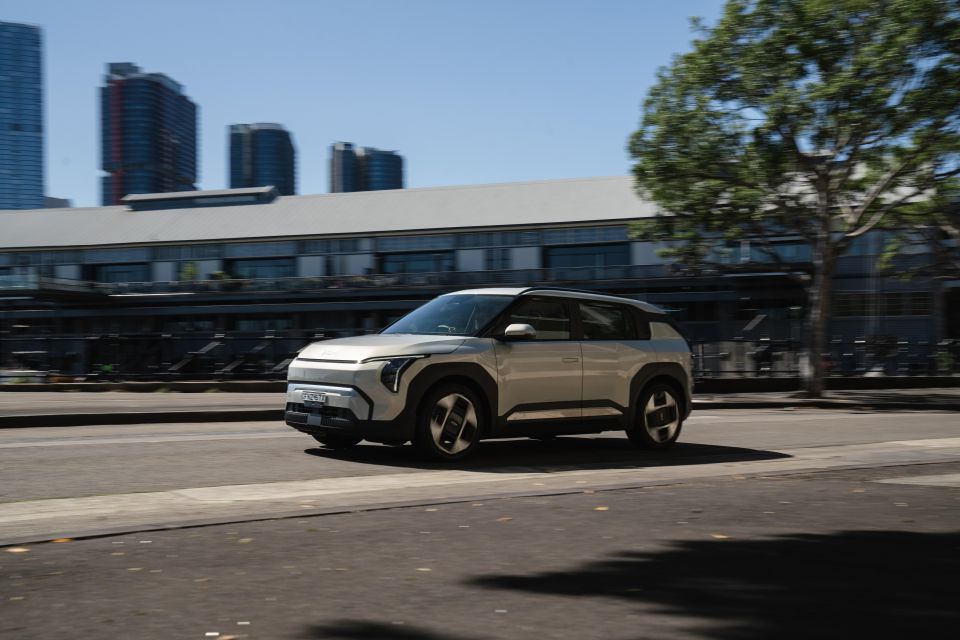
You can fiddle around with the drive modes should you please via the steering-mounted button. It firms up a little in Sport and loosens its grip on the driver controls in Eco, but really Normal is the best balance. There’s a Snow mode too if you’re ever in slippery conditions, though I doubt many EV3 FWD owners will ever take this car off the beaten track.
I almost forgot to talk about performance… All models at launch are powered by the same 150kW/283Nm electric motor driving the front axle. It’s got decent shove for a vehicle its size, as evidenced by the claimed 7.5-7.9s 0-100km/h claims, which feel accurate by the seat of the pants.
The EV3 will feel like it runs out of puff at the top end, particularly going up hills at higher speeds, but that’s not really what this car is all about. Plus, there’s a GT on the way which will give this a performance boost if you want it – though it’ll likely also cost more than $70,000.
Kia has also debuted the new i-Pedal 3.0 system in the EV3, which offers different intensities of regenerative braking in the one-pedal setting. It’s much improved over previous iterations, and there’s also several stages of regen you can adjust through manually via the paddles or even use the Auto mode which uses vehicle sensors to apply regen adaptively.
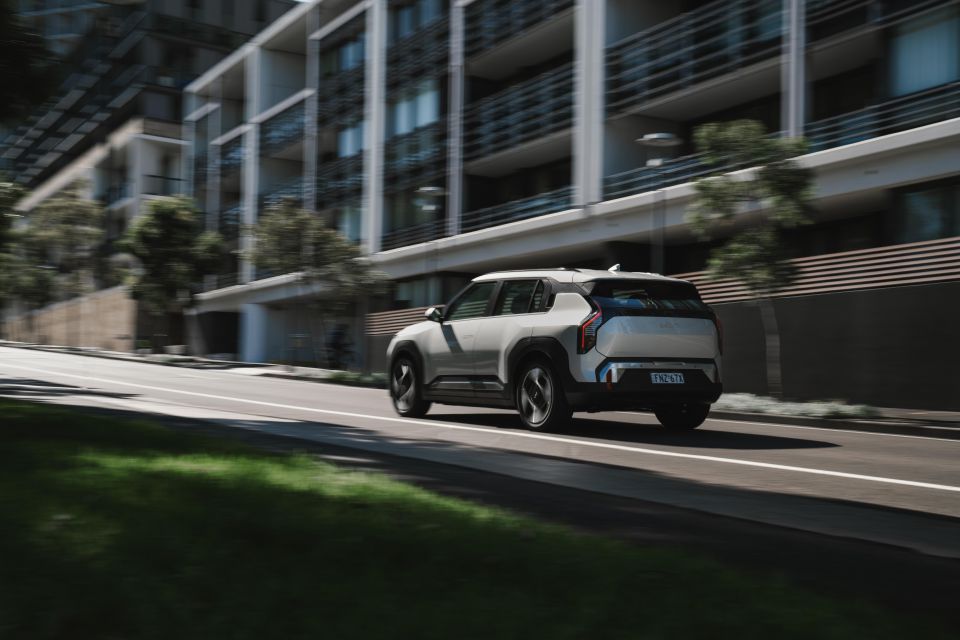
Where expert car reviews meet expert car buying – CarExpert gives you trusted advice, personalised service and real savings on your next new car.
All variants are equipped with the full suite of driver assists, meaning navigation-based Highway Driving Assist is standard including adaptive cruise control and active lane centring – or Lane Following Assist in Kia-speak.
It all works as well as you’d expect, and there’s even Lane Change Assist nicked from the EV9. It’s a little slow to actually initiate a lane change, but it works pretty well. The lane departure warning also doesn’t incessantly beep and bong at you like some rival cars do, though it often vibrates the steering wheel.
What does need to pipe down is the intelligent speed limit assist, which will audibly alert you every time the speed limit changes as well as when your speedo eclipses the posted limit. Thankfully, the EV3 adopts the same shortcut via a long press of the steering wheel mute button to turn the audible overspeed warning off until you restart the car.
Disappointingly, the EV3 doesn’t offer surround cameras or Kia’s nifty Blind Spot View Monitor in Australia. Kia’s local product planning team cites cost as the main factor, though I still think it should have been part of the local roster, at least as an option or reserved for the flagship grade.
To see how the Kia EV3 lines up against the competition, check out our comparison tool
The EV3 is available in three distinct trim levels in Australia.

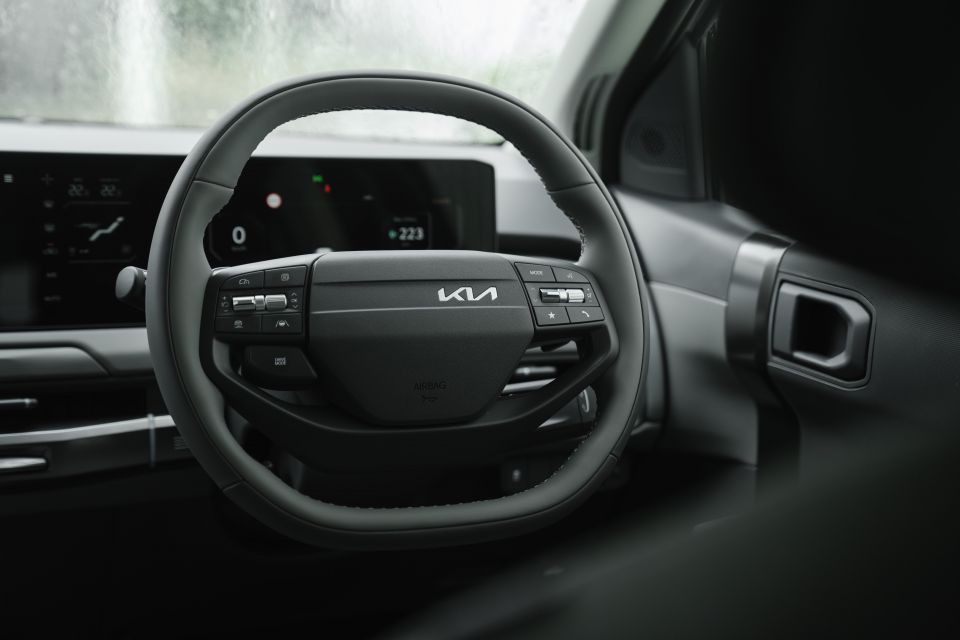
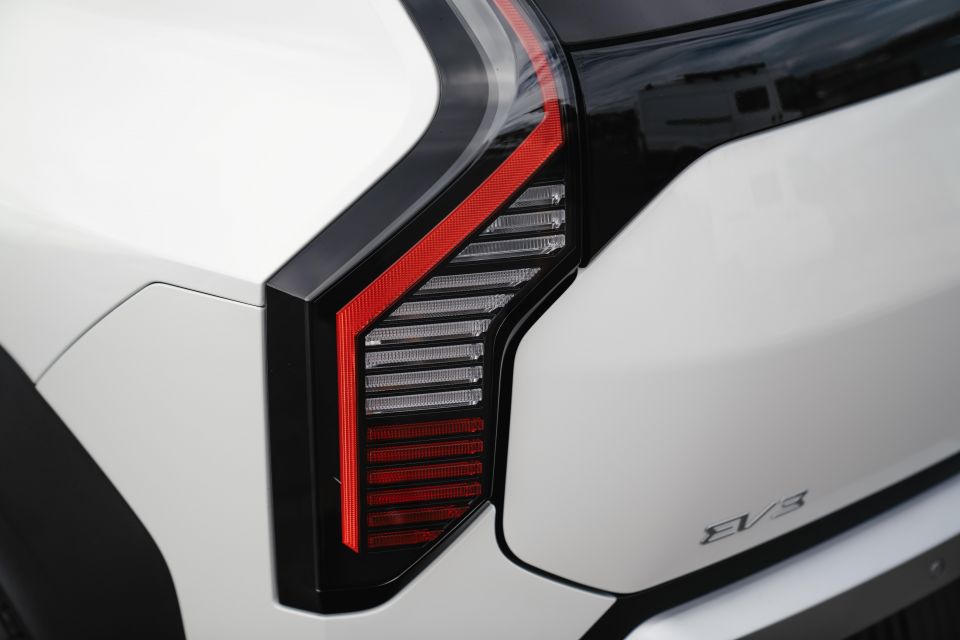
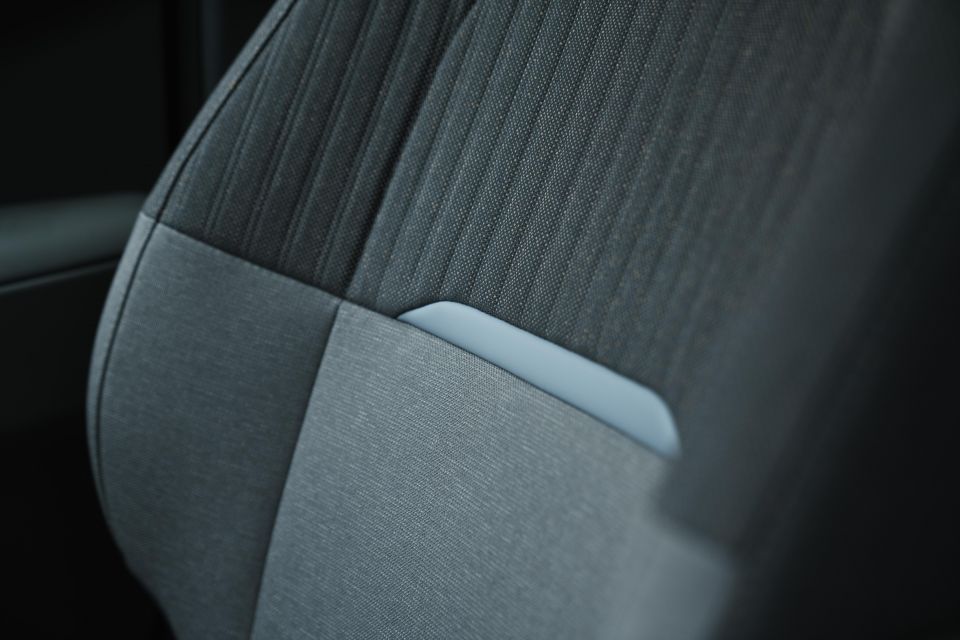
2025 Kia EV3 Air equipment highlights:
EV3 Earth adds:
EV3 GT-Line adds:
To see how the Kia EV3 lines up against the competition, check out our comparison tool
Eight exterior paint colours are available for the EV3, and all but Clear White come at a $550 premium. You can also choose from a handful of interior colourways depending on the variant.
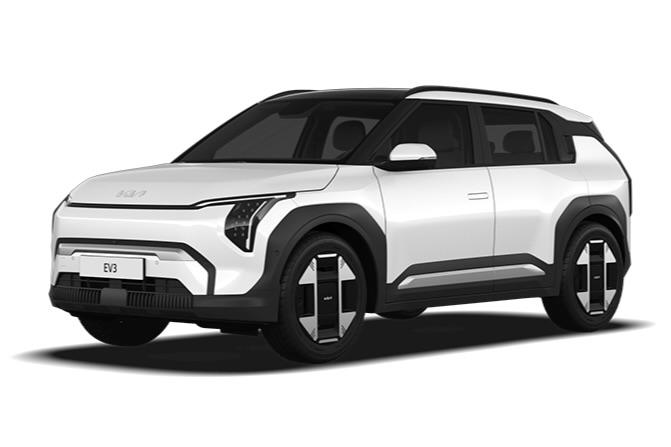

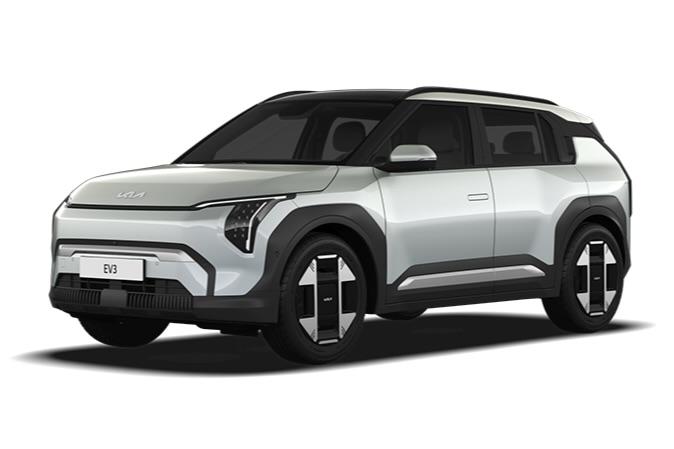
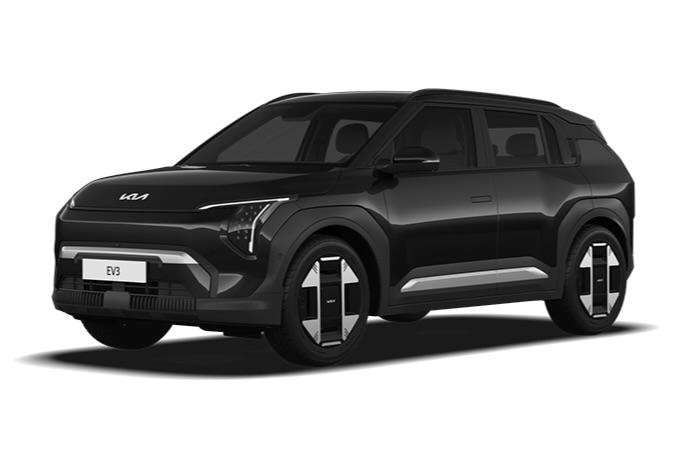
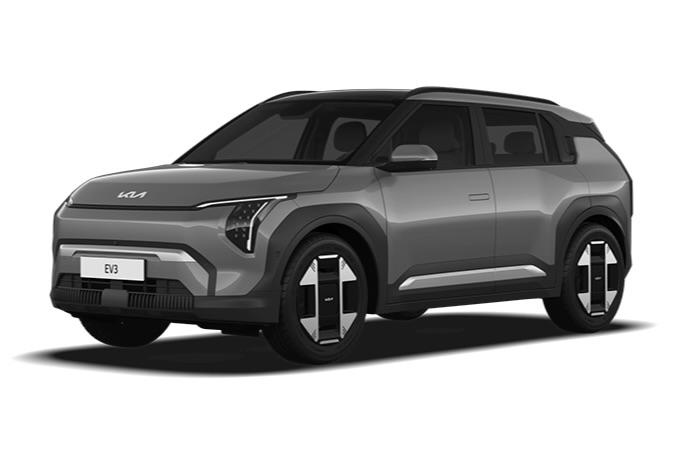
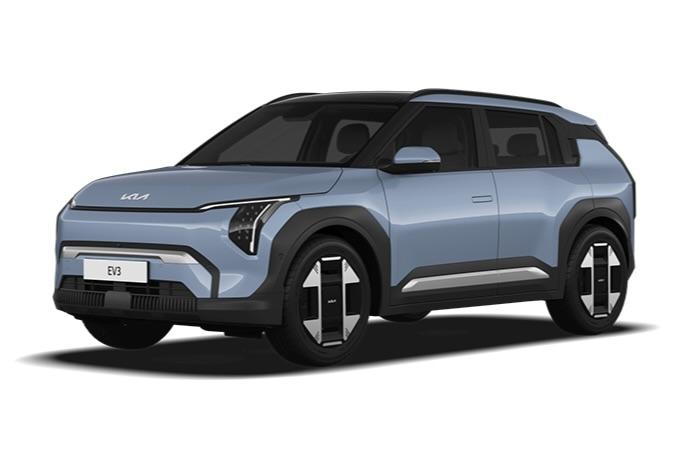
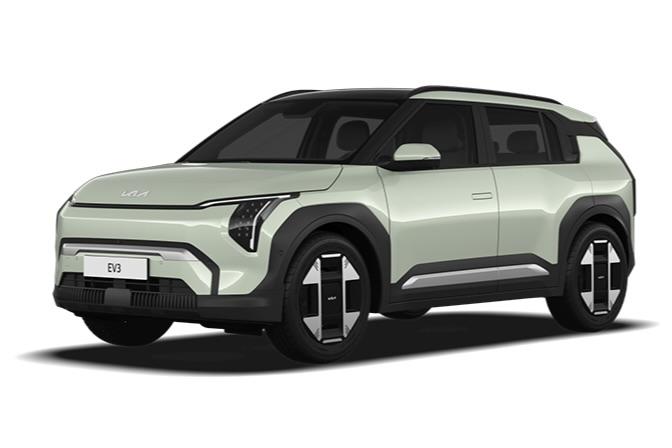
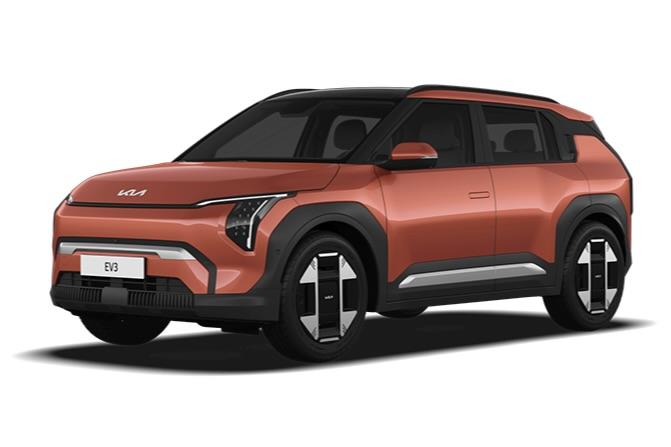
Exterior colours:

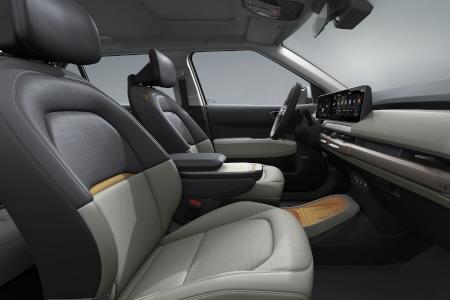

Interior colours:
To see how the Kia EV3 lines up against the competition, check out our comparison tool
The Kia EV3 is currently unrated by ANCAP or its Euro NCAP affiliate. Kia Australia says it expects a rating to be announced in the second quarter of 2025 following Euro NCAP testing.
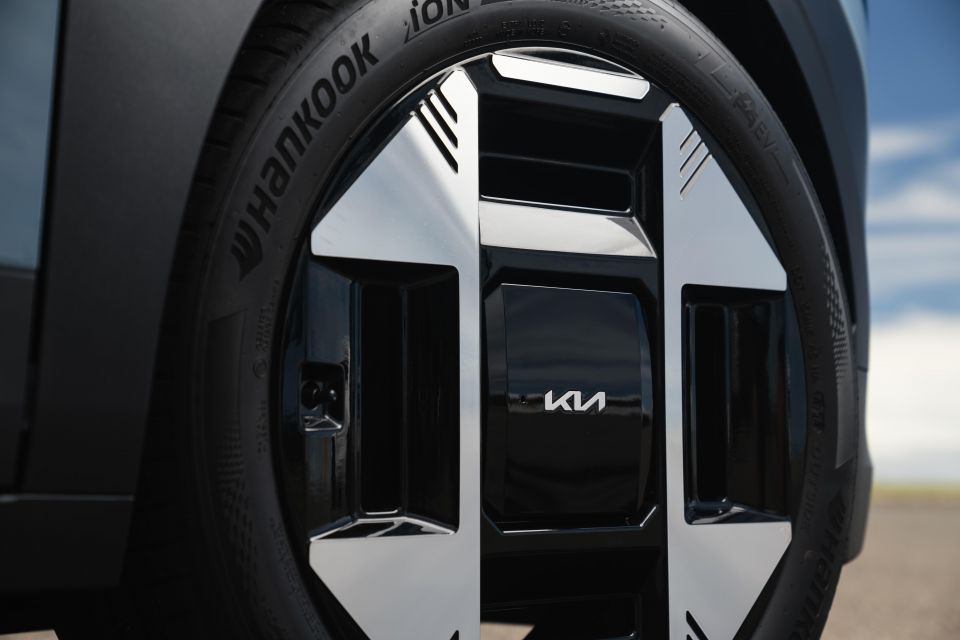
Standard safety features include:
To see how the Kia EV3 lines up against the competition, check out our comparison tool
The EV3 is covered by Kia Australia’s seven-year, unlimited-kilometre warranty, with the high-voltage EV battery backed for the same time period but 150,000km.
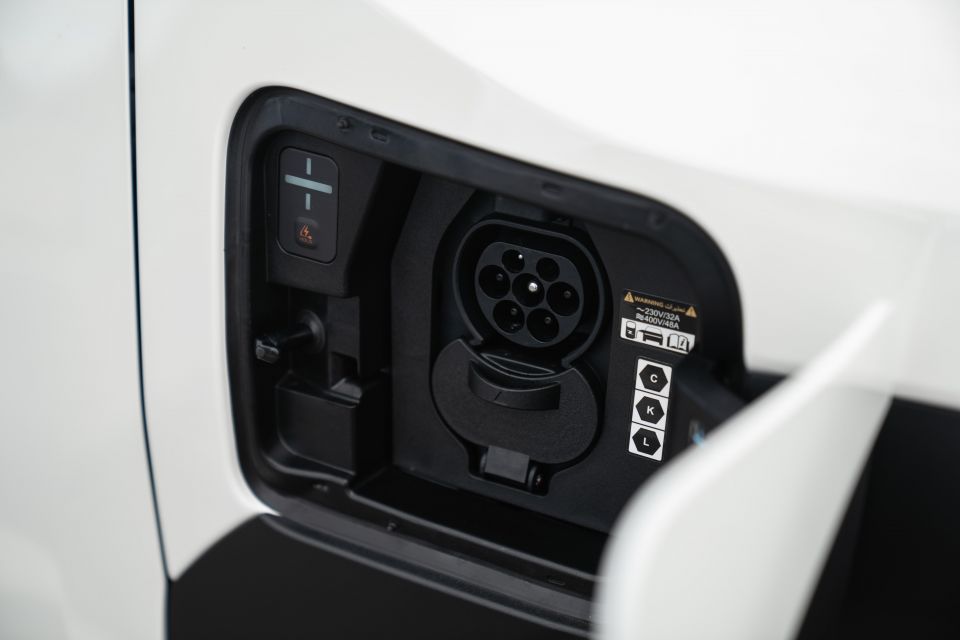
| Servicing and Warranty | Kia EV3 |
|---|---|
| Warranty | 7 years, unlimited kilometres – vehicle 7 years or 150,000 kilometres – EV battery |
| Roadside assistance | Up to 8 years – service activated |
| Service intervals | 12 months or 15,000 kilometres |
| Capped-price servicing | Up to 7 years prepaid |
| Total capped-price service cost | $674 – 3 years $1285 – 5 years $1897 – 7 years |
To see how the Kia EV3 lines up against the competition, check out our comparison tool
The EV3 is just the latest hot bit of kit from a brand that’s on a seemingly never-ending run of good product.
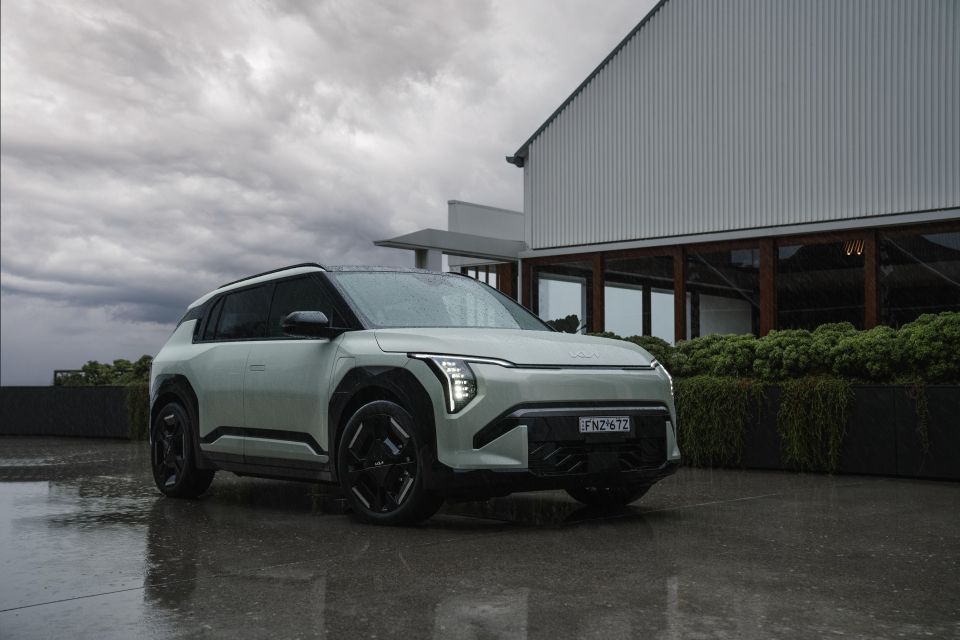
While it can’t match the bargain pricing of ever-increasing Chinese competition, Kia is one of few legacy manufacturers that is competing with these new brands and models with capable electric vehicles.
In the case of the EV3, it’s similar in size to a BYD Atto 3 while offering more range, a more restrained interior design, and arguably more refined technology integration, plus a localised drive experienced that none of the Chinese can touch.
Step up to one of the Long Range models and you have more range than any other electric vehicle can offer you at this end of the market, and whether you’re coming from another Hyundai or Kia product or a combustion vehicle from another legacy manufacturer, you won’t feel like a fish out of water behind the wheel.
The higher grades are a little exxy, particularly the GT-Line, but even the base Air has more than enough kit for most, even if it is wrapped in basic, even frumpy trimmings.
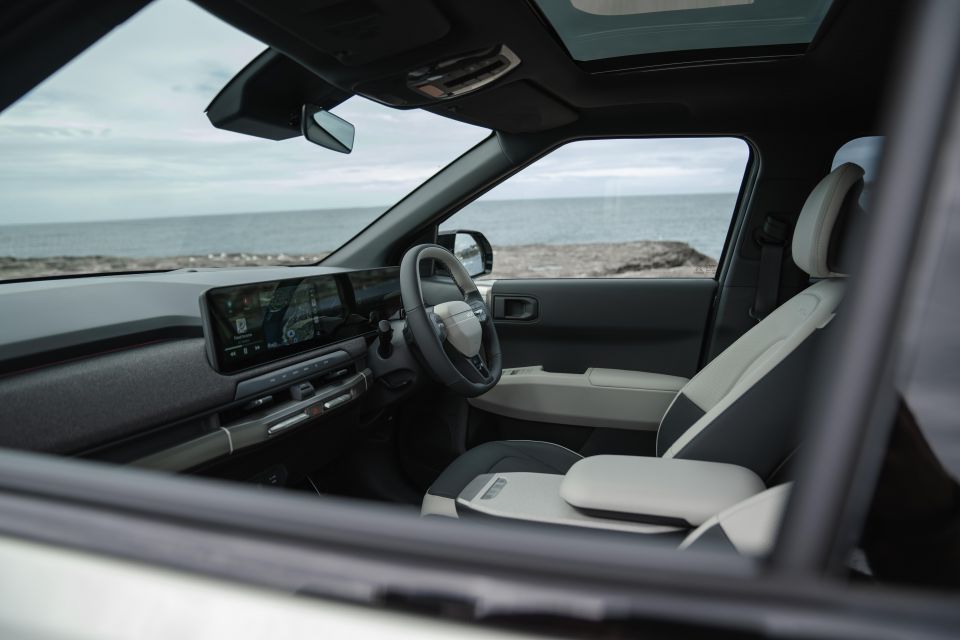
Kia’s done great to get the Air in from $48,990 drive-away, with more than enough performance, range and features to make it not feel like a bargain basement entry vehicle.
The step up to the Air Long Range seems a little steep for not much more than a bigger battery, so the Earth feels like the sweet spot for me. Still, I’d like to see a few more of the GT-Line’s equipment items in the mid-spec variant, as well as the drive-away price revised to something like $59,990 – it would be a steal for that money.
Fun colour options and a very strong aftersales program round out a very compelling bit of kit. Sure, some EV fanatics will knock the NMC battery chemistry and average charging speeds, but the EV3 has most of the other bases covered.
I reckon it won’t be long until these little EVs start becoming a common sight on Australian roads.

Interested in buying a Kia EV3? Get in touch with one of CarExpert’s trusted dealers here
Click the images for the full gallery
MORE: Everything Kia EV3
Where expert car reviews meet expert car buying – CarExpert gives you trusted advice, personalised service and real savings on your next new car.
James is an automotive journalist based in Melbourne, Australia. Before joining CarExpert.com.au in 2020, James has worked at leading auto media outlets including Carsales and CarAdvice, as well as at Pulse agency for Ford Australia's communications team. In 2019 James made Mumbrella's 'Top 20 most prolific web authors in Australia' list after publishing 1,360 articles between March 1, 2018 and February 28, 2019 for CarAdvice. James is also an Ambassador for Drive Against Depression – an Australian charity whose mission is to support mental wellness through the freedom of driving and a shared love of cars.


Paul Maric
6 Days Ago
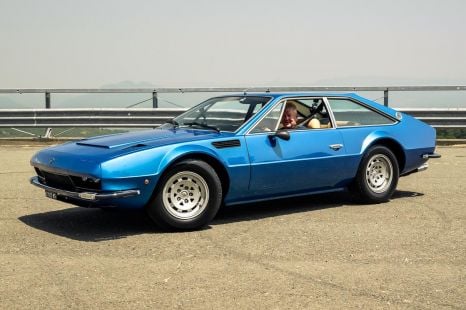

Anthony Crawford
5 Days Ago


Max Davies
4 Days Ago
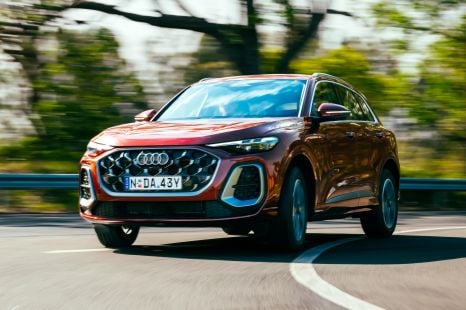

James Wong
3 Days Ago
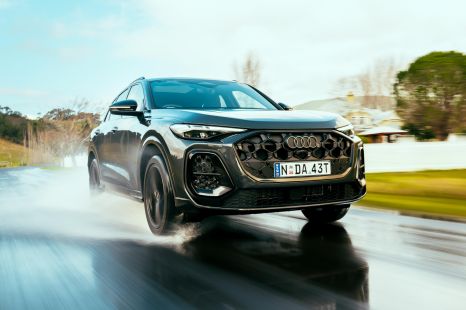

James Wong
2 Days Ago
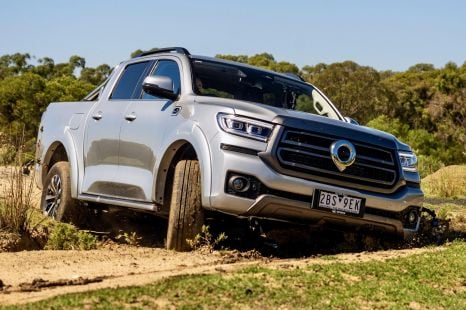

Max Davies
22 Hours Ago